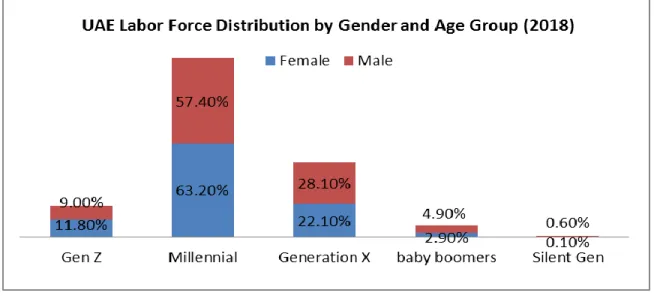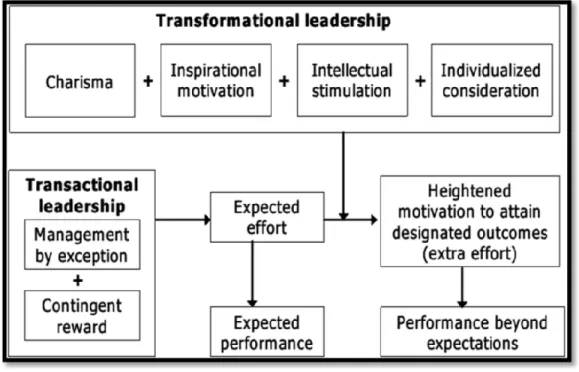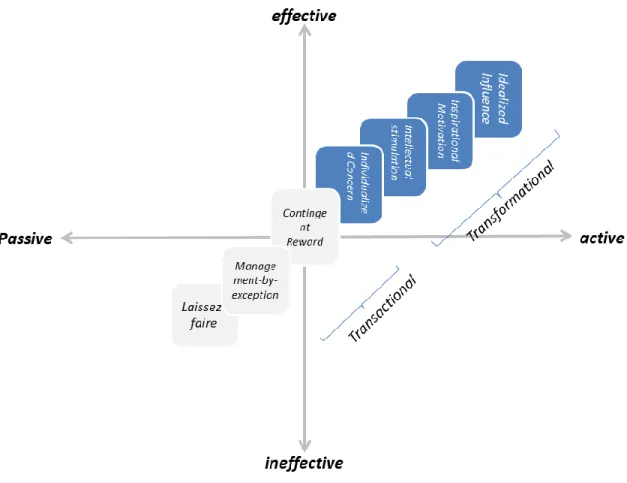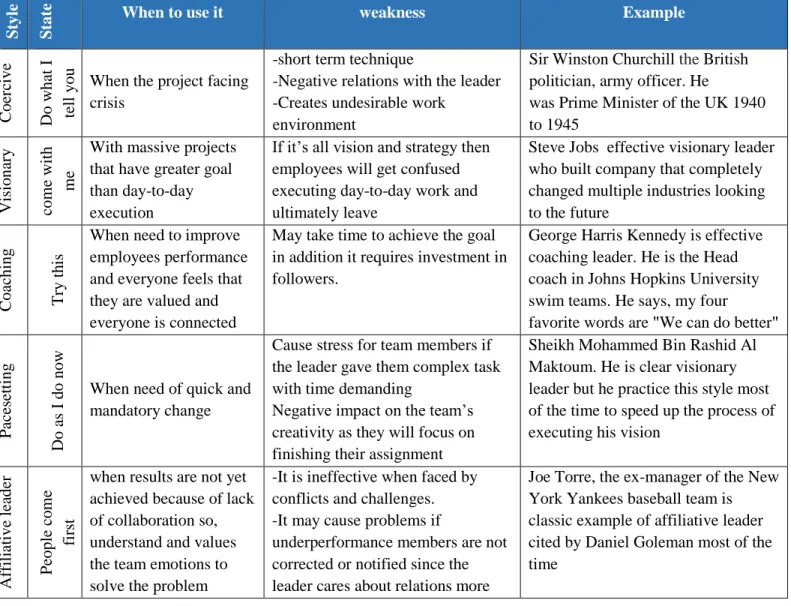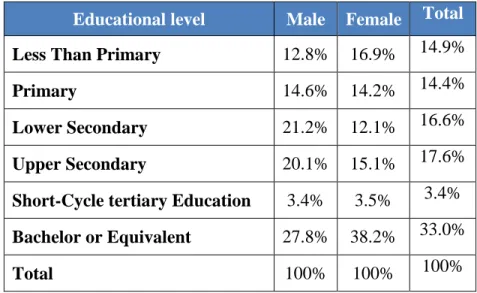I understand that I may apply to the University to retain the right to withhold or restrict access to my thesis for a period that should not normally exceed four calendar years from the congregation in which the degree was awarded, the duration of which shall be specified in the application, together with the exact reasons for making that application. The author, whose copyright is stated on the title page of the work, has granted the British University in Dubai the right to loan his/her research work to users of its library and to make partial copies or for educational and research use only. The author has also granted permission to the University to retain or make a digital copy for similar use and for the purpose of digitally preserving the work.
Finally, I would like to express my deep gratitude to the staff of the British University in Dubai for their good conduct and facilitation of my studies at the university.
Introduction
- Research Aim
- Research objectives
- Research Questions
- Hypothesis
- Implication of the study
- Evaluation of the study
- Structure of the study
This is common in the public sector with limited knowledge transfer, little collaboration at work and sometimes more. Study the literature and identify the key leadership styles to be adopted by the public sector to manage multi-generational teams in the UAE public sector. What are the key leadership elements to be adopted by the public sector to manage multi-generational teams in the UAE public sector.
In addition, it will make quantitatively based recommendations of the key leadership styles preferred to use it to manage multi-generational teams in the UAE public sector.
Literature Review
Generations
- Boomers (1946-1964)
- Generation X (1965-1980)
- Generation Y (1981-1996)
- Generation Z (1997- 2015)
In general, most of the locals worked in the military, so many of them were part of the liberation of Kuwait. Many people call this generation "millennial" and they are currently a sought-after commodity in the workplace. In addition, it was the period of development that the great-grandparents started earlier in the United Arab Emirates.
They shared many incidents during that period and still in the memory of this generation.
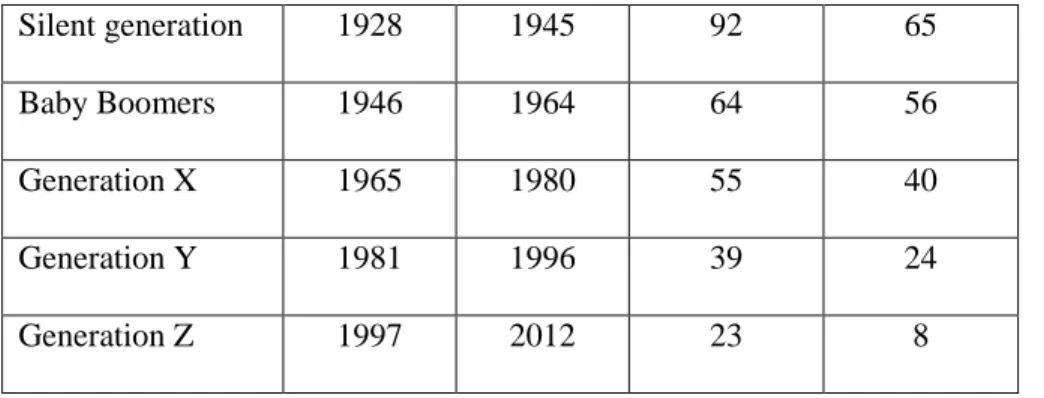
Generations' comparison
At the same time, Generation Z, who are currently employed, are full-time, entry-level, or young professionals with a strong willingness to build their independence and self-confidence, and will define their preferred leadership style in analytical work. this research. It is important to note that 79% of Gen Z feel that they are not well understood by older generations, according to data collected in The State of Gen Z™ annual survey series (Villa & Dorsey, 2020). This suggests that Gen Z can be reckless about proving themselves at work.
Generations Management Specifications
- Multigenerational challenges
- Impact of multi-generation teams on public sector
One reason for the increased complexity is that people are staying longer in the labor market. This means that there are several generations working together in the same place at the same time. In different ways, the generation gap can be the reason why the company or project also flourishes and succeeds.
Each generation perceives the other generation in a certain way or may be different, but it is not 100% true.
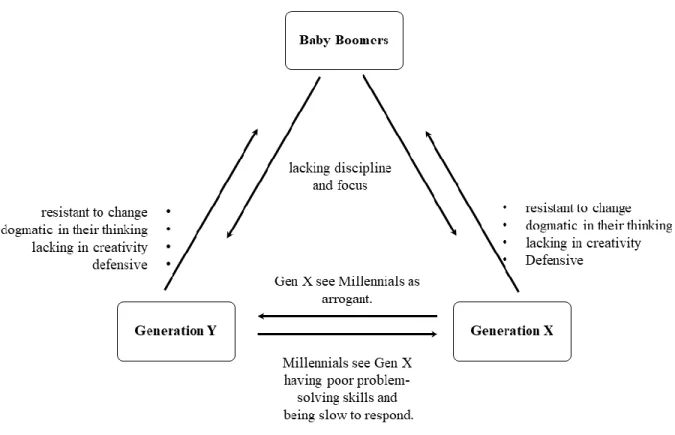
Theoretical background and study contribution of leadership
- New leadership theories
- Transactional theory
- Transformational theory
- Transformational vs. transactional leadership
- The Full Range Leadership Model
- Goleman leadership styles
- The conceptual image of desired leadership style
- Chapter summary
So too when Caldwell said that "leadership is the process of moving a group of followers in one direction or another by mostly non-coercive means and producing movement in the long-term best interest of the group" (Caldwell, 2004) in the fourth edition of leadership skills for managers book. Therefore, leadership has shifted from traditional approach that defines characteristics, behavior of the leaders to the new leadership model according to the change of the work environment in the 1980s (ESMER & . DAYI, 2017). The passive route minimizes the role of the leader and maximizes the chance of errors occurring while avoiding them from the first stage.
The leader communicates the persuasive vision by using symbols to support followers' efforts, represent model behaviors, and instill optimism. It is the element when the leader meets the development needs of subordinates to encourage, support, train and strive to develop their individual potentials. All to improve the leader-member relationship to get the best out of followers.
Both transformational and transactional leadership are mechanisms that involve connecting followers' sense of identity with the project and with the collective identity of the organization (Roberts, 1985) and differ greatly in their characteristics and level of outcomes. Bass created a full-scale leadership model that included seven factors of pulling leadership styles according to leaders' engagement with their teams. Leadership styles are empirical examples of leadership theories, so a style is a specific behavior found under the umbrella of that theory.
He is a clear visionary leader, but most of the time he implements this style to accelerate the process of realizing his vision. While other employees prefer idealized influencers, given their years of experience and work knowledge, they may have more history with the organization than senior management itself.
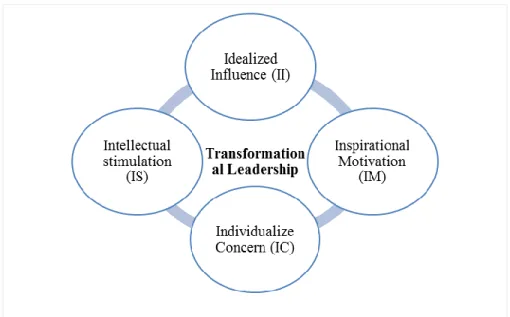
Research Methodology
- Research design and methodology
- Research hypotheses
- Pilot study
- Sample
- Sampling strategy
- Data collection
- Data analysis
- Professional, Legal and Ethical Issues
- Difficulties and Mitigation Methods
- Chapter summary
To analyze the validity of the study's hypothesis, the multifactor leadership questionnaire will be completed (Bass & Avolio, 1996), showing seven elements of transformational and transactional leadership. The original idea of the study was around the age group of the team members and to what extent its variation will affect the leadership style. The purpose of the study is to explore each generation's preferences and connect them with discussed literature previously and the seven subscales mentioned in this study.
This method is useful to support the study and gives an idea of the participants' personality. As previously mentioned, the public sector here denotes the federal and local governments of the seven emirates separately. We will remove nine of the 122 responses because the participants work in the private sector.
Then we focus on men and women, experienced employees and recent graduates with a few months of experience. The most important factor is the age of the participant and the only condition is that he is an employee in the public sector of the United Arab Emirates (local and federal). ). Section one on the demographic information of the participant to have a basic understanding of his/her age (which generation), his/her educational background and the total number of years of experience, and the most important demographic was the organization type to ensure that the participant was included in the targeted segment of the study. The study included demographic variables that describe specific characteristics of the participant, such as his/her age.
So the research should include ethical requirements for the daily work, for the protection of the dignity of subjects and the publication of the information in the research (Fouka & Mantzorou, 2011). On the other hand, we faced a challenge in getting close numbers of the four generations, but this was used to improve the study and negotiate the point about which generation mostly exists today in the workplace in a part of research findings.

Main findings and data analysis
Data Analysis
- Quantitative Data
- Summary of Data Collected
- Employees Rating Data Analysis
- Demographic Data Summary
- Reliability
- Independent Variable Reliability
- Dependent Variable Reliability
- Correlation
- Regression
The mean value of inspiration motivation is 4.42 and the standard deviation value of inspiration motivation is 0.53. The mean value of intellectual stimulation is 4.37 and the standard deviation value of intellectual stimulation is 0.52. The mean value of individual consideration is 4.22 and the standard deviation value of individual consideration is 0.57.
The mean value of contingent reward is 3.9 and the standard deviation value of contingent reward is 0.72. The mean value of management by exception is 3.84 and the standard deviation value of management by exception is 0.63. The mean value of management by exception is 3.12 and the standard deviation value of management by exception is 0.79.
The direction of the relationship between age of respondents and individual influence is also negative and weak. The value of R-squared, known as the coefficient of determination, is used to measure the good fit of the model (Bruin, 2011). The value of B represents the rate of change in characteristics of transformational and transactional leadership styles due to the age of the respondents.
A very small percentage, only 2.8% of the change was observed in intellectual stimulation due to the increase in the age of the respondents. The only characteristic of the transformational leadership style that is significantly related to the age of the respondents is individual treatment.
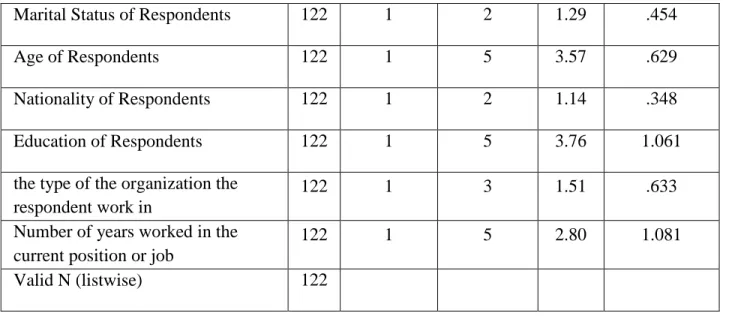
Findings vs hypothesis
In addition, it shows that the four generations share the same feeling for laissez-faire leadership that has low scores at different levels. Also, it appears that Generation Y is negatively related to idealized influence 2.9, as they are the realistic generation. While this generation may be more concerned than others about rising to the top quickly, it may be less about unrealistic expectations than about being better prepared for work than previous generations (Hansen, 2020).
H3: There are differences in transformational leadership preferences as measured by the MLQ among the four generations. H4: There are differences in transactional leadership preferences as measured by the MLQ among the four generations. For example, from the transformational factors we can find that generation Y has the highest degree for inspirational motivation style (4.2), but the lowest degree is for idealized influence even though both are transformational.
H5: There are common preferences of leadership traits measured by MLQ between Boomers and Generation Z. Regarding transformational leadership, they share some similar traits, but not 100% but around 79%. Otherwise, there are large differences in terms of transactional leadership styles that Generation Z has a convergent score of at least 4 for this style.
Chapter Summary
This chapter summarizes the results of the SPSS and converts them into relationships between public sector employees and seven leadership styles to prove whether or not the theories are correct by discussing the finding and the data collected.
Recommendations and conclusion
Limitations of the research
In addition, the researcher could not accurately specify whether the participant prefers this leadership style over another or whether he/she simply likes being treated this way.
Recommendations
However, time was limited so we could not reach the target sample number.
Conclusion
Available at: https://www.pewsocialtrends.org/essay/millennial-life-how-young-adulthood-today-compares-with-prior-generations/. Available at: https://www.fahr.gov.ae/Portal/ar/about-fahr/fahr-strategy.aspx [Accessed 1 Sep 2020]. When Generations Collide: How to Solve the Generational Puzzle at Work, s.l.: The Management Forum Series.
To what extent do you personally agree or disagree that the following factors are associated with the ideal manager you would like to work with. 13 The ideal manager does not try to change anything as long as things are working well.
Gender of respondents
Marital Status
Age of Respondent
Nationality of Respondent
Education of Respondent
The type of the organization the respondent work
Idealized influence Style
Inspirational motivation Style
Intellectual stimulation Style
Individual consideration Style
Contingent reward Style
Management‐by‐exception Style
Laissez‐faire leadership Style
Transformational leadership components
Transactional leadership components
